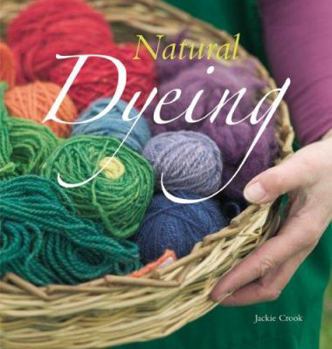Natural Dyeing
Select Format
Select Condition 
Book Overview
For thousands of years, natural dyes have been celebrated for their subtlety and diversity--and, thanks to contemporary concerns about chemicals and toxins, their popularity is surging again. Fortunately, as this vibrant guide so elegantly shows, the craft is both easy and enjoyable to explore and requires no special equipment: just ordinary pots and pans. A thoroughly illustrated tutorial covers all the basics of hot and cool dyeing, and 30 colorful options to try, including roots and plants (madder, tumeric, henna), wood (cutch, fustic), flowers (safflower, dandelion, daffodil), leaves and stalks (tea, rhubarb, indigo), and fruits and vegetables (blackberry, wild cherry, avocado). From pale pinks and vibrant oranges to earthy browns and rich blues, a vast spectrum of hues awaits.
Format:Paperback
Language:English
ISBN:1600592228
ISBN13:9781600592225
Release Date:October 2007
Publisher:Lark Books (NC)
Length:112 Pages
Weight:1.00 lbs.
Dimensions:0.4" x 9.0" x 9.5"
Related Subjects
Crafts Crafts & Hobbies Crafts & Hobbies Dye Engineering Needlecrafts & Textile Crafts TechnologyCustomer Reviews
1 rating
In response to the previous comments . . .
Published by Thriftbooks.com User , 16 years ago
I bought this book more for the information about the cleaning, mordanting and dyeing processes described in the beginning of the book. And I must say the photography is brilliant. As for obtaining the dyes, I use dye extracts from Table Rock Llamas in Colorado. They offer over 30 colors, including the exotics shown in "Natural Dyeing" (they don't sell toxic mordants). But if I want to grow my own dye plants, I rely on "A Dyer's Garden" by Rita Buchanan, a fantastic little book that gives growing info, dye recipies and results, and a supplier's list to obtain plants and seeds. Finally, I will experiment if I want to see what color a particular plant might give -- I hear bindweed, a noxious weed where I live, gives brilliant greens . . .






